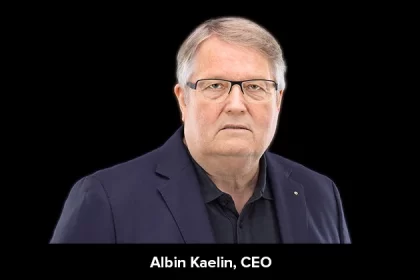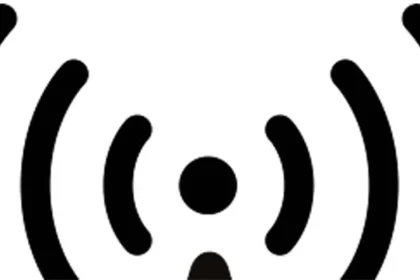Fancy buying some Bitcoin using Euros right from your European bank account? For many, SEPA transfers offer a straightforward and often inexpensive pathway into the world of crypto. Forget wading through dense technobabble; this step-by-step guide for 2025 zeroes in on exactly what you need to do. We’ll smoothly cover selecting your ideal platform – whether that’s an exchange or a peer-to-peer service – then detail making your EUR to crypto deposit via SEPA transfer, actually purchasing Bitcoin, and finally, securing your new digital assets.
Why Use SEPA for Bitcoin Purchases?
So, why opt for a SEPA transfer when you decide to buy Bitcoins using your Euros? Think of SEPA (that’s the Single Euro Payments Area) as the established network connecting banks across 36 European countries, streamlining Euro payments. It provides a direct route from your personal bank account straight to many crypto platforms. The standout benefit? Definitely the potential for low fees crypto purchases. While credit cards might sting you with 3-5% fees, SEPA transfers often cost very little, sometimes less than a single euro – a significant saving, particularly if you’re investing more substantial amounts.
However, keep the SEPA transfer time in mind. Standard transfers usually take 1-2 business days to land, which could matter in fast-moving markets. The good news? SEPA Instant offers near-real-time transfers, day or night. The catch is that not all crypto platforms support this faster service just yet. Also, be prepared for identity verification (KYC) before making your first SEPA deposit; it’s a standard requirement on reputable platforms due to regulations. Despite the potential wait for standard transfers, these clear cost advantages make SEPA a very practical choice for many European buyers.
What You’ll Need to Buy BTC with SEPA
Alright, before you jump into buying Bitcoin, let’s quickly run through what you absolutely must have ready. Think of it as your starting kit for the crypto world. You’ll generally need:
- A bank account within the SEPA zone that you can access online – this makes transferring funds a breeze.
- A valid government-issued ID, like your passport or national ID card. You’ll need this to prove who you are.
- An email address – this is how the platform will keep in touch with you.
- A secure internet connection, ideally your home Wi-Fi, to keep your transactions safe.
Just a heads-up, the exact bits and pieces needed might change a little depending on where you’re buying your Bitcoin, but these are the big things you’ll almost certainly need if you’re using European Bitcoin exchanges.
Crypto Exchanges vs. Fiat On-Ramps
Types of Platforms with SEPA Support
So, you’re looking to dive into the world of crypto using your trusty SEPA transfer? Great! You’ll find a few different kinds of places that can help you do just that. The most popular are Centralized Exchanges (CEXs): think of them as your main crypto marketplace where you deposit euros via SEPA and then buy various cryptocurrencies directly from what the exchange has available. Then there are Peer-to-Peer (P2P) platforms, which work a bit differently by connecting you straight to other folks who are selling crypto, with the platform acting as a secure middleman for the transaction. You might even stumble upon some specialized service to buy Bitcoin or other dedicated platforms that support SEPA, but for most people wanting a simple way to deposit euros and then buy crypto, CEXs usually offer the most straightforward path.
Key Selection Criteria
Picking the right crypto platform SEPA for your journey involves a few important things to keep in mind. Here’s a quick rundown of what you should consider when you compare crypto platforms:
- SEPA Support: First and foremost, make sure the platform actually accepts standard SEPA transfers. Bonus points if they also support SEPA Instant for those times you need things to move a little faster!
- Security & Reputation: You want to make sure your money and crypto are safe, right? So, look for platforms with strong security measures, that follow the rules and regulations, and have generally positive reviews from other users. This is crucial when considering any crypto exchange security.
- Fee Structure: Nobody likes hidden costs! Take a good look at the deposit fees, the trading commissions you’ll pay when buying or selling, and any withdrawal costs. Keep an eye out for those Bitcoin SEPA fees and compare them across different options.
- Verification Requirements: Be prepared to go through a Know Your Customer (KYC) or Anti-Money Laundering (AML) process. Understand what kind of documentation the platform will need before you can start depositing your euros.
- Ease of Use: Especially if you’re new to all this, think about how user-friendly the platform is. Is the interface clear and easy to navigate? This is something to consider even for P2P platform choice.
Just a heads-up, the rest of this guide is going to focus mainly on using CEXs, as they tend to be the most common and easiest way for most Europeans to get started with crypto. Remember to always do your own research and be careful when choosing a platform!
Account Setup and Verification (KYC)
Jumping into the world of cryptocurrency trading usually kicks off with a pretty simple first step: signing up on a crypto exchange. You’ll typically just need to pop in your email address and come up with a strong, secure password to get the ball rolling. However, if you’re planning on doing things like bank transfers, especially through systems like SEPA, there’s a crucial next step: Know Your Customer, or KYC, verification. Think of it as the exchange making sure you are who you say you are. This identity verification Bitcoin process generally involves uploading a copy of your government-issued ID, like your passport or driver’s license, and some proof of your address, such as a recent utility bill or bank statement.
Now, this KYC verification in crypto isn’t just some annoying hoop to jump through. It’s actually a really important part of AML compliance, which stands for Anti-Money Laundering. Legitimate crypto exchanges have to follow these rules to operate legally in regulated areas. While it might take anywhere from just a few hours to a few business days for the platform to check your documents, depending on how busy their verification queue is, getting this done is key. Once you’re verified, you’ll unlock all sorts of useful features, like being able to use SEPA transfers, having higher limits on how much you can withdraw, and generally making your account more secure. So, while it might take a little patience, it’s a standard procedure that opens up the full potential of the exchange.
Depositing Euros via SEPA Step-by-Step
Ready to deposit Euros through SEPA and fund your crypto account with SEPA? It’s simpler than you might think! Here’s a straightforward guide to initiating a SEPA bank transfer with instructions to your chosen cryptocurrency exchange:
- First things first, head over to the deposit or funding section of your exchange account and locate their specific SEPA banking information. You’ll need the full scoop: that includes the IBAN (International Bank Account Number), the BIC/SWIFT code, the name of the bank, and the beneficiary name – make sure you jot all of this down accurately.
- Now, pay close attention here: the exchange will provide you with a unique Bitcoin deposit reference number or Memo ID. This is super important! Think of it like a special delivery instruction that tells the exchange exactly which account those Euros belong to. Without this reference, your deposit could get seriously delayed or even bounce back.
- Next up, log in to your own online banking portal and start a new SEPA transfer. Carefully enter all the banking details you just noted from the exchange. Double-check everything, especially that long IBAN – it needs to be spot on! And don’t forget to include that crucial Reference/Memo ID in the designated field.
- Before you hit that ‘confirm’ button, take one last, really good look at all the details. Make sure the amount is correct and that you’ve entered the Reference ID perfectly. Even a tiny typo can cause headaches and delays, potentially sending your funds back to your bank.
- Now comes the waiting game. If the exchange supports SEPA Instant, you might see those Euros pop into your account within minutes. Standard SEPA transfers usually take a bit longer, typically around 1 to 2 business days. Just a friendly reminder: that correct reference number is your best friend here – it ensures your funds are credited quickly. Skip it, and you might be looking at several extra days for manual verification.
Buying Bitcoin with Deposited Funds Step-by-Step
Alright, your Euros have landed safely in your account (ideally). Now comes the more exciting part: actually getting your hands on some Bitcoin. Buying Bitcoin on the exchange is pretty straightforward. Just follow these simple steps to place your first BTC order:
- First things first, double-check that your EUR deposit is showing up in your account balance. You should see it there, ready to be used.
- Next, head over to the trading area of the platform. Look for the BTC/EUR trading pair – it’s usually pretty easy to spot on most crypto exchanges. This is where you’ll be swapping your Euros for Bitcoin.
- Click on the ‘Buy’ option. You’ll likely see different order types, but if you’re just starting out, a ‘Market Order’ is generally the easiest way to go. It basically means you’re buying Bitcoin at the best price currently available, and the trade happens almost instantly.
- Now, you need to tell the platform how much Bitcoin you want. You can either enter the amount of EUR you want to spend, or if you have a specific amount of BTC in mind, you can enter that. The platform will automatically figure out the other value for you.
- Before you finalize anything, take a quick look at all the transaction details, especially any fees involved. Once you’re happy with everything, hit that ‘Confirm’ button. Just like that, within a few moments, your newly purchased Bitcoin will appear in your platform wallet. Congratulations, you’ve made your first crypto investment!
Keep in Mind: Security, Fees & Timing
Security is Paramount
When you’re jumping into the cryptocurrency world, keeping your assets safe is the absolute top priority. Think of it as locking your front door – you wouldn’t skip it! Always turn on two-factor authentication (2FA), and using an authenticator app is generally a more secure move than relying on SMS. Make your passwords super strong and different for every platform you use. Stay sharp and watch out for those sneaky phishing attempts – double-check website addresses and never click on anything that looks suspicious. If you’re planning on holding onto your Bitcoin for the long haul, consider moving it to your own personal wallet. This gives you complete control and shields your crypto from potential exchange vulnerabilities.
Be Aware of Fees
Before you commit to any crypto platform, take a good look at how they charge. Often, depositing Euros via SEPA is free, but it’s always smart to double-check. When you’re actually buying or selling (trading), you’ll usually encounter maker and taker fees, and the exact percentages can vary from one exchange to another. Also, pay close attention to withdrawal fees – these apply when you’re taking out either Euros or Bitcoin, and they can really add up, especially if you’re dealing with smaller amounts. Your best bet is always to find and review the current fee schedule on the specific platform you’re using.
Transaction Timelines
When you’re planning to buy Bitcoin, it’s good to have a realistic idea of how long things might take. If both your bank and the exchange support SEPA Instant, those transfers can be lightning fast, sometimes completing within minutes. Standard SEPA transfers typically take a bit longer, usually around 1 to 2 business days, but remember that weekends and holidays can cause delays. Also, if it’s your first time using a platform, you’ll need to go through a verification process, which can add some initial waiting time – it could be just a few hours or even a couple of days, depending on how busy the platform’s verification queue is and how accurate your documents are.
Conclusion
So, to wrap things up, using SEPA transfers can be a really smart way for folks in Europe to grab some Bitcoin, if you play it right on whatever exchange you’re using. It boils down to this: first, make sure your account is totally squared away with verification; second, when you’re putting money in, double-check those reference codes – seriously, it matters; and third, think a little bit about when and how you actually buy your Bitcoin. Don’t forget the crucial stuff like turning on that two-factor authentication (2FA) and keeping an eye on any fees or how long things take to process. Stick to these simple pointers, and your experience buying Bitcoin with SEPA should be smooth sailing and, most importantly, safe.










